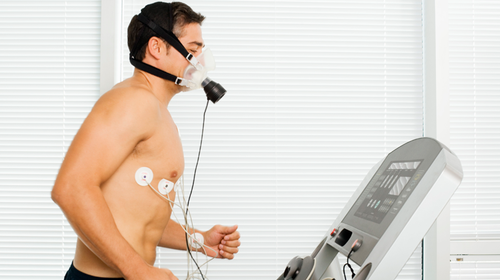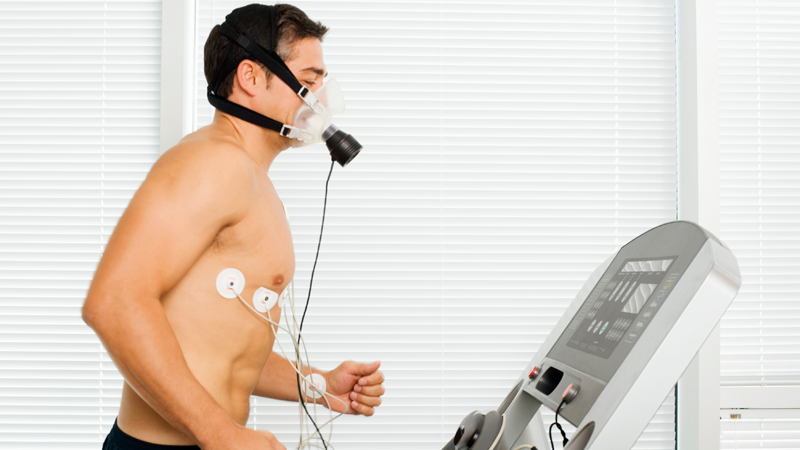Elite endurance athletes and exercise physiologists have long known that VO2 max may be the single greatest determinant of athletic performance. But few recreational athletes have access to the kind of specialized lab equipment typically used to assess and train their number. Now a suggests a reliable, yet simpler way to find your VO2 max: An online estimator using your age, weight, sex, waist circumference, resting heart rate, along with data on the frequency and intensity of exercise.
While this tool may work for large populations, it has limited use as a training tool for individuals to track changes in performance and to set targets. But athletes aren’t out of luck. You can estimate and train your VO2 max without setting foot in the lab.
What is Maximum Oxygen Uptake?
The physiology behind your max can get complicated, but it is essentially a measure of your aerobic engine size and just how much blood and oxygen your heart can deliver to your exercising muscles. Because this number serves as the ceiling on aerobic athletic performance, increasing it allows you to perform at a higher level or at the same speed with less effort. For young and middle-aged people, a max of 30-40 ml/kg/min is typical, though this number can be easily boosted with training and weight loss. World-class runners, cyclists, and triathletes are typically in the 70-85 range.
Can Max Be Estimated?
Yes, and you don’t need a high-tech performance institute to do it for you. can help you find these numbers on your own. I contacted Dr. Andy Coggan, a Senior Scientist at Washington University School of Medicine and author of , for input:
You can find literature supporting anything from just under 10 to around 12 mL/min per watt as the slope of the power vs. VO2 relationship (i.e., economy) in trained cyclists. In my hands, the average would be ~10.5 mL/min per watt.
This means that you can multiply by the maximum power output (watts) you can sustain for 4-5 minutes on the bike by 10.5 and estimate the oxygen consumption associated with cycling. Account for basal metabolic rate and you get an estimate of max that is within perhaps 5 percent. A simpler way to do it is just multiply the power output you can sustain for 4-5 minutes by 12 and divide by your bodyweight in kilograms.
Things are a little more complicated with running because the oxygen running speed relationship is much more variable than the oxygen power relationship in cycling. However, if you know your best 10k time, you can make an estimate using this equation from , one of the true pioneers in human performance research. Dave founded the world-famous Human Performance Lab at Ball State University and has arguably studied more elite endurance athletes (especially runners) than anyone else.
120.8 – (1.54 x 10k time in minutes)
Using this equation
30 minutes = 75
40 minutes = 59
50 minutes = 44
60 minutes = 28
Make Your Max Rise
Making your VO2 max rise should be one of your primary goals as an endurance athlete. And there are two ways to tackle it: from the weight side of the equation or from the power production side. If you reduce your weight, your VO2 max jumps. So focusing on a sustainable junk-food-free diet is the key to lowering this number.
Equally important but sometimes harder to nudge is your power output. Pushing this number up takes a focused approach, but it also requires a low time commitment, making this one of the best ways to boost your fitness while training indoors as the winter approaches. Three times a week, complete four to six intervals in the three-to-five minute range with up to equal rest. Runners should aim to hit these repeats at their best 5k times while cyclists should target about 90 percent of the power output they can sustain for 4 to 5 minutes.
The gains you’ll see are potentially dramatic. Consider the average recreational athlete in his 20s or 30s. He weighs 80kg and has a 10k personal best of about 46 minutes. Using the equation above his estimated max is 50ml/kg/min or about 4L/min. With interval training the power side of the equation may increase 5 to 10 percent. If he drops 5 percent of his bodyweight, or about 9 lbs, he’ll suddenly be in the 56-57 ml/kg/min range—a whole new performance category with a 10k time of perhaps 41 or 42 minutes.
Michael J. Joyner, M.D., is a physiologist and anesthesiologist at the Mayo Clinic and a leading voice in the world of exercise physiology. Over the past 25-plus years, he’s published hundreds of studies, many of which have focused on how humans respond to exercise. Dr. Joyner also writes at . The views expressed in his posts are his own and do not reflect those of his employer.


